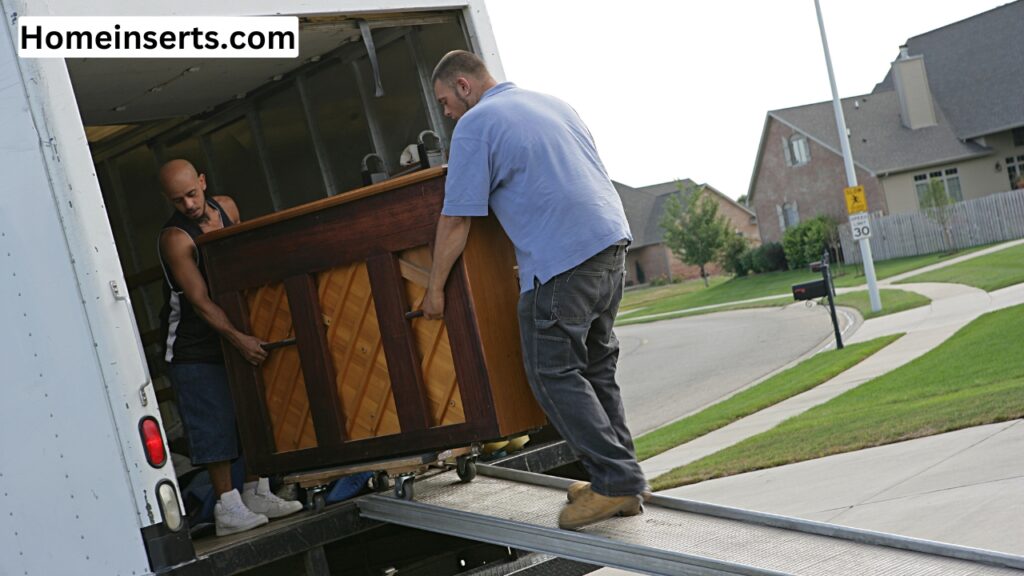
Loading and unloading are integral aspects of moving or transporting goods. This can be shifting into a new house, unloading supplies, or managing inventory. While the activities seem simple, they pose dangers that may result in injuries or damaged chattels if not carried out correctly. It is, therefore, important to know the best safety practice in loading and unloading. Only then will everything be successfully accomplished without either one of you getting hurt or your belongings being ruined in the process.
We shall here share some essential information that would help in safe loading & unloading, avoiding common mistakes that lead to injuries, and how best to keep your stuff intact.
1. Pre-Landing Preparation
Before you begin the loading and unloading process, take a few moments to plan. A little foresight can help reduce confusion, save time, and minimize potential accidents.
Evaluate the Space Ensure there are no obstructions to the space you will load or unload to. If you’re unloading to a warehouse, parking lot, or even a driveway, ensure that it’s large enough for the truck to park with no hassle or inconvenience about getting items in or out.
Checklist: Arrange all the things you need to do in a checklist, and nothing will fall through the cracks. This will also keep you focus on the end goal.
Sort and Prioritize: Sort items to organize by size and weight. This can help in the most efficient loading strategy. Heavy and bulky items go first, lighter or fragile items on top.
Planning ahead doesn’t just save time; it also helps avoid rushing, which can lead to accidents or mistakes during loading & unloading.
2. Use the Right Equipment for the Job
Proper tools and equipment are essential when it comes to safely loading & unloading heavy objects. If you’re working with large or cumbersome items, don’t hesitate to use the necessary tools that can make your job easier and safer.
Dollies and Hand Trucks: A dolly or hand truck can bring in heavy boxes, furniture, and other large items with minimal effort. These tools are important for keeping your back and muscles safe from injury.
Ramps: When unloading large items from a truck, the ramps will make it easier to move goods from the vehicle to the ground without damaging the items or causing harm.
Straps and Ropes: To secure items in place, use straps or ropes to prevent them from shifting during the loading & unloading process. Properly securing items ensures both safety and protection of your belongings.
Pallet Jacks: For larger warehouse jobs, pallet jacks are invaluable in moving heavy loads efficiently. They provide a stable base for lifting and transporting goods.
The effort spent during the loading & unloading process will be much lesser; apart from that, the use of proper tools can also significantly reduce the chance of injury and damage.
3. Correct Lifting Techniques
The physical requirement in loading and unloading usually has to do with lifting heavy or awkwardly shaped objects. Not lifting properly may cause severe injuries to back, shoulder, or joints.
Lift With Your Legs: While lifting, always bend through your knees and not at the waist. Use the leg muscles instead of the back to lift, which is more prone to injury.
Avoid Twisting: Twisting while lifting or carrying can put strain on the spine. Always keep your body aligned and pivot through your feet, not through your torso.
Assistance with Heavy Loads: If the object is too heavy or large, do not attempt to lift it personally. Lift together with your colleagues so that accidents are avoided as well as the load is shared appropriately.
Lift Using Correct Apparatus: If heavy loads cannot be managed by a human, machines like forklifts, hoists, and winches should be used because this would reduce unnecessary stress.
Proper lifting techniques are the most important safety measures regarding loading & unloading. These guidelines will help you avoid all permanent physical injury and pain.

4. Maintain Organization to Avoid an Accident
Maintaining things during the time of loading & unloading, it not only makes it easier for the task but also ensures that everything is handled with care. Proper organization brings down unnecessary movement inside the workplace and prevents tripping/knockdowns of items.
Arrange Items Strategically: Put heavy items on the bottom of your loading, while the lighter, breakable items will go on top. This helps to spread the weight as evenly as possible and also can shield the more fragile items from damage from potential falls.
Clear Pathways: Ensure that pathways to load and unload are clear of debris, cords, or anything that could cause a person to trip. This will help people avoid injuries in the process.
Mark contents on boxes and containers: Ensure that you tag what is inside, especially if some things are delicate. This will help you prevent mishandling and confusion.
Organizing will preserve your things from getting damaged while minimizing the chances of accidents or injuries.
5. Safety Gear
Safety is essential when handling goods loading & unloading. Protective gear goes a long way in minimizing the risks involved.
Work Gloves: Wear sturdy gloves to protect hands from cuts, abrasions, or scrapes when handling items with tough or pointy edges.
Steel-Toe Boots: These are great to use when moving heavy machinery, heavy furniture, or boxes that might fall on your feet by accident.
Back Support: If you expect to be lifting heavy things, using a back support belt can really help stabilize your lower back and thereby not aggravate the strain.
Safety Glasses: You’ll be working with heavy machines and falling objects, which would mean debris coming from anywhere; therefore, you should wear safety glasses to protect your eyes.
Wear the appropriate safety equipment so you don’t get hurt when loading & unloading.
6. Be cautious on the weather
The weather plays a big role in the safety of your loading & unloading efforts. Poor weather can include rain, snow, or extreme heat, which increases the chances of an accident.
Rain and Snow: Wet surfaces can be slippery ground, therefore increase chances of falling. Use non-slip footwear, and if possible, clear off any wet areas before proceeding.
Heat and Humidity: In hot weather, take frequent breaks and stay hydrated. Overexertion can lead to heat exhaustion or heatstroke, which can be dangerous during physical labor.
Wind: Strong winds can make it difficult to move items safely, especially large or lightweight goods that may blow over. Try to secure items and wait for more favorable conditions if necessary.
This way, the weather conditions would be factored into your operations, and you would in turn save both yourself and your goods from damage during the loading & unloading processes.

7. Take Breaks and Hydrate Regularly
Loading & unloading would be very demanding physically, especially when large quantities of items are involved. Ensure that you do take your breaks at appropriate intervals to rest and keep rehydrated if working in warm or humid conditions.
Take Regular Intervals: Do not exert yourself; let your body regain the energy, primarily after exerting strength in lifting heavy objects or heavy-duty work.
Hydration: Drink sufficient water to keep the body from dehydration and weakness, or sometimes dizziness and heatstroke.
This way, being alert to your needs of the physical, you shall avoid burnout and complete the job safely and efficiently.
Conclusion
Loading and unloading might seem like simple, ordinary tasks, but careful attention has to be provided to safety in order to avoid injury or damage to your possessions. Be it a change of house, unloading goods, or simply re-arranging furniture, the right techniques and appropriate equipment will make the process smoother as well as safer.
Be safe and confident and effective by planning, staying organized, using proper tools, and protecting yourself physically while completing the job. Every step forward will place safety at the forefront of all your actions, and thereby, you will ensure that your belongings and your body remain safe during the entire loading & unloading process.




